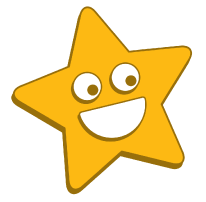

Learn how many days there are in a month and year!

Author
Lucy Hart
Published
June 26, 2023


Learn how many days there are in a month and year!

Author
Lucy Hart
Published
June 26, 2023


Learn how many days there are in a month and year!

Author
Lucy Hart
Published
June 26, 2023


Key takeaways
Have you ever wondered how many days there are in a year or how many days are in a month? If so, we’ve got you covered.
In this blog, we’ll explore the days and months of the year, including a breakdown of how many months there are in a year. Let’s get started!
There are 365 days in a year.
This is the same every year, apart from one exception… Once every four years, we have what’s called a ‘leap year’, which has 366 days!
When this happens, February gets an extra day added to it – from having 28 days in an average year to 29 days in a leap year.
You may be wondering why this happens (as it does seem pretty strange!). Well, the extra day is added to help synchronise our calendar (known as the ‘Georgian calendar’) with the solar year, or the length of time it takes Earth to complete its orbit around the sun.
If this extra day wasn’t added, our calendar wouldn’t match the Earth’s orbit. This would mean that our seasons would gradually become more and more out of sync – so we’d eventually have cold, snowy summers!
Unlock unlimited maths questions
Put your learning into practice with fun exercises + games that are proven to boost ability!
Get 2 FREE weeks of Doodle!
Use code 2WKS_2026 to enjoy unlimited questions and games
Get 1 FREE month of Doodle!
Use code MONTH_2026 to enjoy unlimited questions and games
There are 12 months in a year.
These months are the same every year and always run in the same order, starting with January at the start of the year and ending with December at the end of the year.
The 12 months in our calendar are:
These months fit into our seasons – summer, autumn, winter and spring. Each season lasts around three months, and the months that make up each season are:
Have a go at some DoodleMaths questions
Select a year group
The number of days in each month varies, but they’re always between 28 and 31 days.
Here’s a quick breakdown of the number of days in each month:
This may seem like a lot to remember, but don’t worry! This rhyme will make them really easy to memorise:
30 days have September,
April, June and November.
All the rest have 31,
except for February alone,
which has 28 days clear
and 29 in each leap year.
And there we have it! With this handy guide, it’ll be easy to remember how many days there are in a year.
For even more ways to explore measurements of time, be sure to create a DoodleMaths account.
Designed to be used for just a few minutes a day, it’s filled with fun exercises that explore the whole EYFS, KS1 and KS2 maths curriculum – and best of all, you can try it for free!

There are 365 days in a year, apart from leap years, which have 366 days.
There are 366 days in a leap year. When this happens, February gets an extra day added to it!
There are 52 weekends in a year.
There are 104 weekend days in a year.
We can work this out my multiplying 52 (the number of weekends in a year) by 2 (the number of days in a weekend). Doing this gives us 104!
There are between 28 and 31 days in a month. This varies between months (and for February, whether it’s a leap year or not).
There are 12 months in a year. In order, these are:

Book a chat with our team
If you’d like to use Doodle’s browser version, please visit this page on a desktop.
To log in to Doodle on this device, you can do so through our apps. You can find out how to download them here: